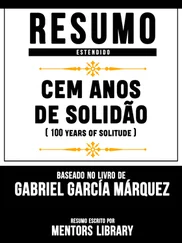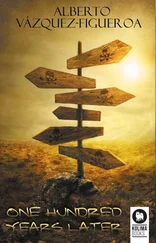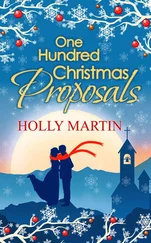CHAPTER VII. Trip to N. (NOTES FROM THE GRAY NOTEBOOK, 2005)
5/1/2005 On the back of the map of the little town of N., near another photo of the statue on the fountain, the tourist center has included a summary of the town’s history, starting 500,000 years ago, lingering over the 17th, 18th, and 19th centuries, and ending with a leap from 1933 to 1945:
Between 1920 and 1933, the university’s reputation grew due to the presence of several renowned physicians and humanists. During World War II, the town escaped the bombings. In 1945, the university reopened. Today, the population is 130,000 inhabitants, of which 20,000 are students.
5/1/2005 UNIVERSITY OF N.
ADMINISTRATIVE ARCHIVES
• Photos of Christian M. at the ceremony for the 250th anniversary of Gustav-August University in 1937.
Photo No. 1: His speech in the grand hall, which has been decorated with flags.
Photo No. 2: The French delegation poses in the public square, in front of the gabled houses and the Nazi banners, with a man in a dark uniform (knickerbockers and riding boots, armband) holding a panel for the photographer that reads “Frankreich”; the two men in the delegation are both in French academic dress, one with a handsome mustache, wearing an
épitoge
with three ermine stripes, and M., with his black mask and the Commander’s cross of the Légion d’Honneur hanging around his neck over the white cotton
rabat
.
• M. His desire for knowledge (insatiable curiosity) transformed after his injury into a need to be recognized as the best in everything. The physical transformation led to a mental transformation (obviously!). He himself speaks of a “second birth.”
5/3/2005 KÜRZ COLLECTION
• Kürz saved everything. His journal (Paris, 1942). Photographs, notebooks, log books, mathematical manuscripts, articles written by others that he annotated, letters he received and copies (carbon) of his own letters. An enormous collection.
5/4/2005 Correspondence between Kürz and M. No (or very little) math in these letters. Letters twelve pages long. Their common love of Greater Germany. Written in French! A bit boring and then, all of a sudden, a surge of lyricism, to express the love of the French lark, or “alouette,” (M.) who flies under the protection of the German eagle (Kürz). The eagle and the lark…
• Other letters, notably from:
- Silberberg, in 1939, from Strasbourg. He sent a lemma.
- Slawek, a Polish mathematician, employed as a feeder of lice (serving as a blood source for lice in order to create a serum to combat typhus). A letter of appeal for help (1943). No carbon copy of a response.
- Ernst von Apfeldorf, thanking him for a dinner invitation, 1950.
- Yersin (senior), Paris, 1942, thanking him for food tickets.
• In Kürz’s archives, articles by Silberberg, but also separate copies of his two notes published by the Academy of Sciences. Lots of annotations and writing crossed out in pencil. He really worked on these papers!

Must go see the archives of Harold Smith, in Oxford: he worked with Kürz’s son-in-law after the war.
5/5/2005 TIEDEMANN COLLECTION
• Letters, photos. He lived on Humboldtstrasse.
He was a cellist. His wife, a pianist. Lots of chamber music. A trio with Schreiber, a student of Tiedemann’s who played violin.
A photograph shows them in action. The violinist’s bright blue eyes. Became a more famous biologist than his mentor. Emigrated in 1938 (his stepfather was Jewish). Found a job at a small university in the American Midwest.
• Another photograph: an evening in his garden on Humboldt Street, in 1943.
This picture leads to a few questions.
- In 1943, no one could have known that the little town of N. would be spared from the bombings. The threat must have made dinner invitations and receptions risky. Even in pretty houses with gardens, festive gatherings must have been rare.
- What products were available to make a tart, for example? Butter, etc.? What if you were an individual (Frau Tiedemann)? A pastry shop (Korb & Schlag)?
- Who is the doctor in the photo? Haven’t found any mention of this Friedrich elsewhere, in any of the university archives. Was he there as a doctor? Called to come treat one of the guests? M.’s neuralgia?
• M.’s presence in the photo, his presence in N., raises more questions.
- Official forms to fill out in order to enter Germany in 1943, both before traveling and at the border: the usual bureaucratic details, but also a declaration of religion, certifying that one was not Jewish (for French citizens, this was noted on passports).
• Coincidences: the young and brilliant mathematician Otto Zach was reported missing from the Eastern Front (battle of Kursk) the very day M. gave his talk in N.
5/6/2005 On the train (back to Paris), questions:
• Concerning another one of the people present in the photo of the charming summer evening in 1943, Ernst von Apfeldorf. This fact doesn’t appear in the university’s biographical dictionary, but he was among those addressed in the letter of appeal that Marcel Schmitt sent to several German historians asking them to intervene in favor of Daniel Roth, a historian who specialized in the historical events referenced in Dante’s
Inferno.
Evacuated to Clermont-Ferrand with the University of Strasbourg, he was arrested in June 1943 as a member of the Resistance and sent to Germany. He was beheaded in Wölfersheim on December 5, 1943. Impossible to know whether the letters Schmitt wrote actually reached their destinations. Ernst von Apfeldorf, who was well placed and very influential, didn’t come forward, according to Schmitt.
• Also in summer 1943: the bombing of Hamburg. 40,000 civilian deaths? Flames 8,000 meters high? Corresponding exactly with the dates of Kürz’s visit to Paris (June 1942): the filming of
Les visiteurs du soir
in Paris. The flames coming up to lick the hands of Jules Berry (the devil). How high? A girl’s love being stronger than the devil (this is a film!).
• “History is the science of man’s misfortunes” (Queneau,
Une histoire modèl
e). Mathematical modelling? A truly complex predator-prey system — certain sardines can become sharks, for example.
• Testimonials from those who survived the Nazi camps. During the transportation in uncovered freight cars following the evacuation of Auschwitz (march of death), survivors saw the corners of these cars as relative shelters.
• A circle has no corners. Neither does a cylinder. Hence, perhaps, the descriptions of hell: circles (Dante), a cylinder (Beckett’s little book
The Lost Ones
).
• List of hells: Homer (steersmen, the dog of hell), Christian (pain and a black pit), Dante (wretched hearts), Brueghel (succubus, lemures), Goethe (cloven-hoofed demon).
Plus musicians, Liszt (
After a Reading of Dante: Fantasia quasi Sonata
).
And now.
Beckett.
• Thinking of other books. For example:
Painting at Dora
(Dora was the camp where they developed the V-2 rockets). Le Lionnais was deported to Dora. During the roll call, he mentally recreates a museum of paintings (Brueghel at Dora). Painting numbers, which he speaks about with another deportee, beautiful numbers, π, the square root of 2. The finer points of number theory. His book
Les nombres remarquables
, dedicated “to my lifelong friends, delicious and terrifying, numbers.” Terrifying? Why terrifying? See, for example, what he says on the 7th positive integer. Or on the 24th?
Читать дальше













